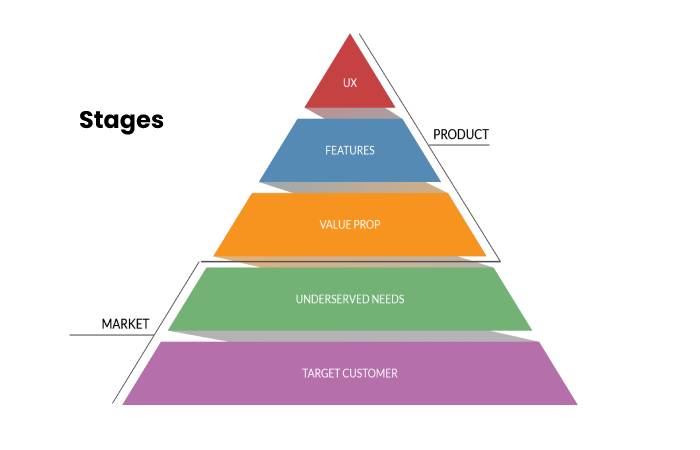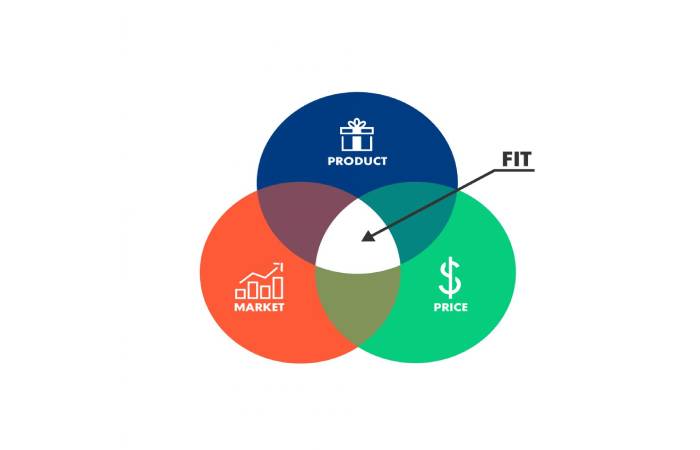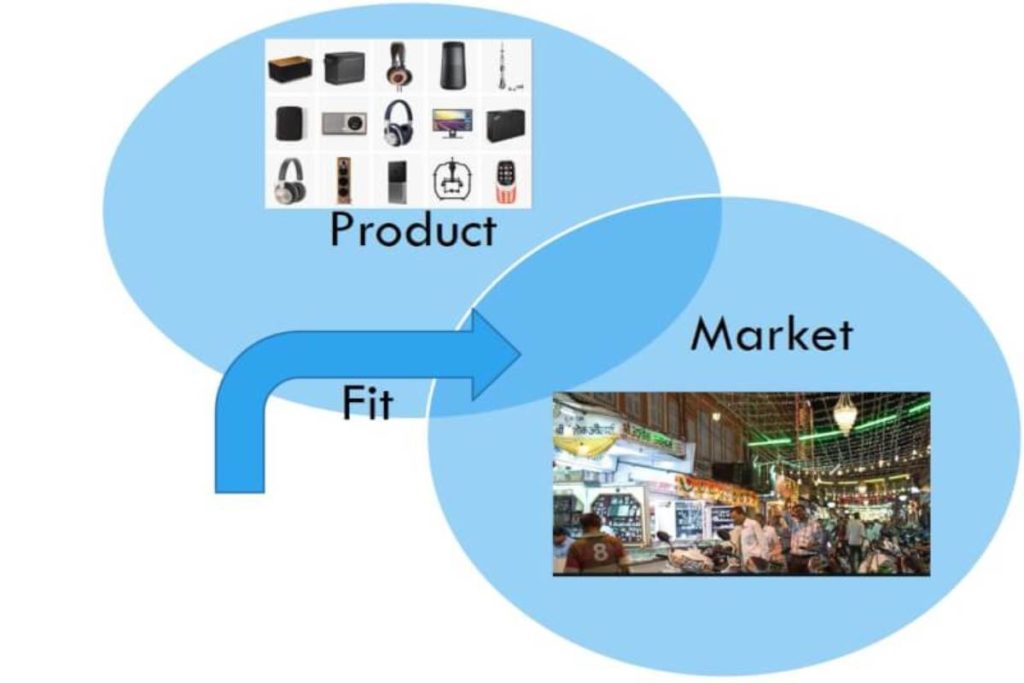Table of Contents
What is Product-Market Fit?
Product-Market Fit is the process of adjusting the product in the market and evaluating its profitability, knowing if the product meets the people’s needs.
It confirms when the client validation process verifies that you have located a group of potential clients and react positively to your service or product; you offer something that interests a group, and you start selling it.
Concept of Product-Market Fit
It base on three concepts:
- A customer is willing to pay for your package or product.
- What it costs you to get the finished product is less than what you will receive for it.
- Check that the market is receptive to our business idea and can be profitable.
- When starting a Startup, company, or business project. It is essential to achieve the Product-Market Fit since it will not become a reality without it.
- And also, it is where more resources and work must put when starting to create the company.
- It must bear in mind that once we achieve our Product Market Fit, we cannot forget about it and not pay attention to it again.
- It is a business value that must always be updated and observed because its needs and trends change every day.
- But really, the relationship between product and customer becomes Product Market Fit when your sales no longer intend for the type of segmentation. You want your customers to go to how fast you can sell or how quickly you are getting new customers.
Stages of the Product-Market Fit

- First, there is a stage called Customer Discovery when you reflect and choose the type of customer you want.
- It goes to a Customer Validation stage when that fit between customer and product occurs when it starts to sell, and everything devised is working, and it starts to grow.
- In short, the Product-Market Fit seeks first to reach a target market segment.
- It aims to estimate the potential that the Startup can reach and to achieve this.
- It has a set of tests to assess whether it can move to another stage (of business growth).
Why Does the Product-Market Fit Generally Fail?

I identify the main reasons why the product-market fit fails. If you have any more identified, I invite you to share them in the comments.?
1. Market Fit work Does not Take into Account
- As simple as that. The work of verifying the idea and accepting the minimum viable product is usually wholly ignored, left in the background, or not carried out with the necessary rigor.
2. Your Solution is not Adequate
- Although you thought your product was great, in the end, you discover that customers do not respond, either.
- Because you do not provide an adequate solution or because the problem is not significant enough for the customer to pay to solve it.
3. There is No Market, or It is Inaccessible
- It happens when the customers willing to buy your product are very, very few, to the point of making your development unviable.
- Or when the competition has such high entry barriers in place, you cannot reach customers in practice.
4. Sales achieve, but customers are not satisfied
- It is not worth just getting your first customers. Your “early adopters” have to satisfy sufficiently. Otherwise, you will not get the necessary “engagement” and loyalty. Nor, of course, virality.
- If the customer is not satisfied, you must pivot and adjust your product.
- But many times, due to the excess of confidence produced by the sales achieved or due to lack of resources, time, or laziness, the necessary corrections do not carry out.
5. Insufficient Differentiation and Absence of the “A-ha” Moment
- In services and info-products in competitive markets, the market fit often fails because of the proposed solution. It does not manage to differentiate itself or achieve the desired “A-ha” effect on the customer.
6. Absence of a Product Manager
- In micro and small companies, it is easier to avoid this error since, generally, the same person makes the decisions about the strategy, the product, and marketing.
- But in larger companies, the existence of different departments makes decision-making more complex.
- If we want to adjust the product to the market, we must find the conjunction of the three points of the triangle: sales, marketing, and business. And for this, many times it is necessary to introduce a new figure: the product manager.
- This figure allows the business’s different interests to intertwin, get the most out of marketing actions, and increase sales.
Calculate the Product-Market Fit
Another difficulty in dealing with the product/market fit is how to measure and evaluate it.
There is no exact way to measure product/market fit. Checking that the product adapts and adjusts to the market can be a difficult task.
There no concrete and globally accepted metric that determines whether or not the goal is achieved.
Although there some commonly extend ones, we are going to see five standard metrics that you can use:
1.Conversion and Sales Level
- In your validation phase, it is normal for you to target a limited number of leads. And you must get your first sales, your “early adopters.”
- If they are good leads, that is, “qualified” leads, of quality and who already know you in some way, you should aim to achieve a conversion rate of at least between 10% and 25%.
- If leads come through a validation test, such as a cold traffic campaign in Facebook Ads, the percentage will low and depend on your sector, the competition, and the product you sell.
- But if you get rates of 3%, you can already be more than satisfied.
- The important thing is that you set a billing goal of at least 5,000 euros, either by selling a few products with a medium-high ticket.
- If your product is a medium-low ticket, reaching a much larger number of customers in several waves.
2. Survey
One of the best-known measurement examples the survey Sean Ellis conduct to determine whether a product successfully introduces to the market.
It determines to survey the degree to which a product is essential in the customer market through the question “How dissatisfied would you be if this product.
There longer exist ed tomorrow” or what is the same, what would your degree of disappointment if this product ceases to exist tomorrow ?:
- In his book, Hacking Growth, Ellis poses this question with four possible answers:
- Very disappointed;
- A little disappointed;
- Nothing disappointed (not that useful);
- N / A (I don’t use it anymore).
- Suppose a result equal to or greater than 40% disappointed by the product’s withdrawal achieve. It is a good sign, and the product or service can define as successful.
3. Survey of the Degree of Recommendation (Net Promoter Score)
- It is a way of measuring the satisfaction of our clients that consists of asking your first clients. Your “early adopters,” to rate the following question on a scale of 0 to 10: “Would you recommend our product or service to a friend or colleague?
- Surveys have the advantage that they are quick to implement and can provide you with your first data on your product-market fit.
- Now, don’t trust the polls at all. They are the first indicator, but it is much safer to decide based on what people do than what they say they would do.
- Also, surveys do not help you measure the market’s size, which is a fundamental piece of information when deciding on your business’s potential and how much “gasoline” to inject to grow.
- For that, it is crucial to managing two other metrics:
Engagement Metrics
- You need to confirm that the customer is using your product or service.
- The data on visits to the web or app downloads are not worth it. Do you need to measure concrete actions on what they do next: your lead magnet download? Do you add products to the cart? Have they seen the videos you include?
- In short, are they using the functionalities of your website, your platform, software, or your app? And with what intensity?
- The problem with this data is that we usually work with a too-small database and that, on the other hand. We measure what we have thought about, but what we have not noticed can escape us.
Retention and Cancellation Fees
- Know if your customers repeat or leave (cancellation rate or “churn”). For this, it is necessary that the necessary time passes and that you take samples based on cohorts.
- Then you can refine the data for the most relevant segments of your market. And deepen the knowledge of those who stay. And those who leave through specific surveys.
- This metric is the time it can take to have a representative sample in specific sectors, such as the monthly payment Saas.
- Once all these metrics are positive, you will have much more security when carrying out your business’s strategic plan and betting on it. And investing seriously.
Conclusion
In short, the product-market fit does not guarantee success, but not taking it into account can guarantee failure. It is an essential concept when launching a new product or service regardless of the type of company.
At this point in the article, it only remains to clarify. The market product fit should not take as an immovable theoretical truth.
Always keep it in mind and adapt it to your business’s needs to acquire all the necessary tools. Thus be able to do everything on your part to achieve the best possible results in the launch of your product or service.

